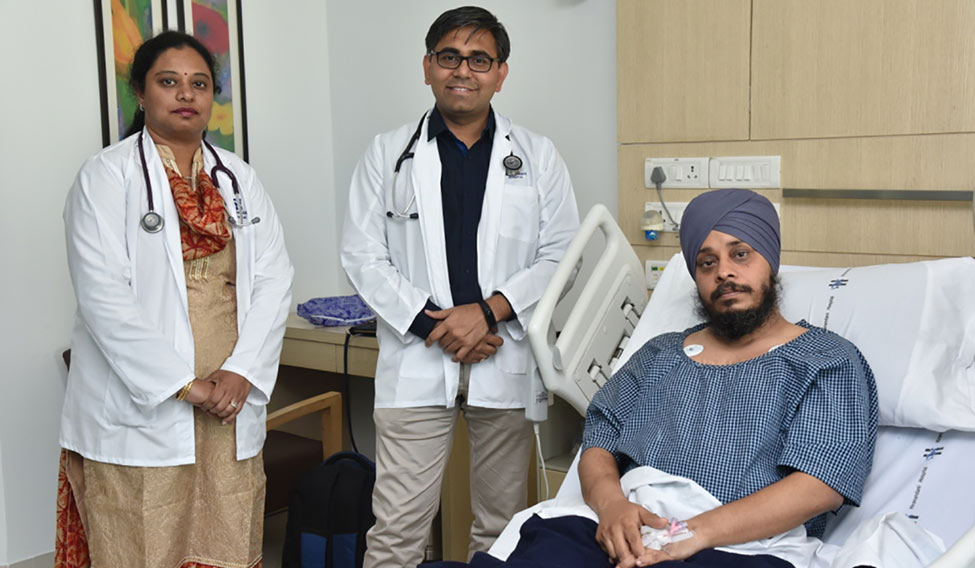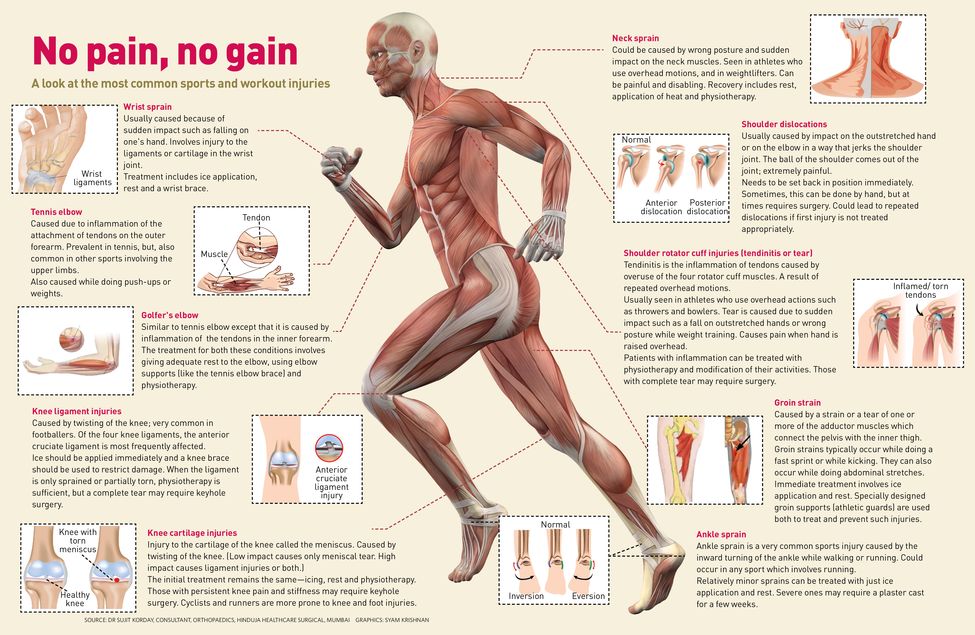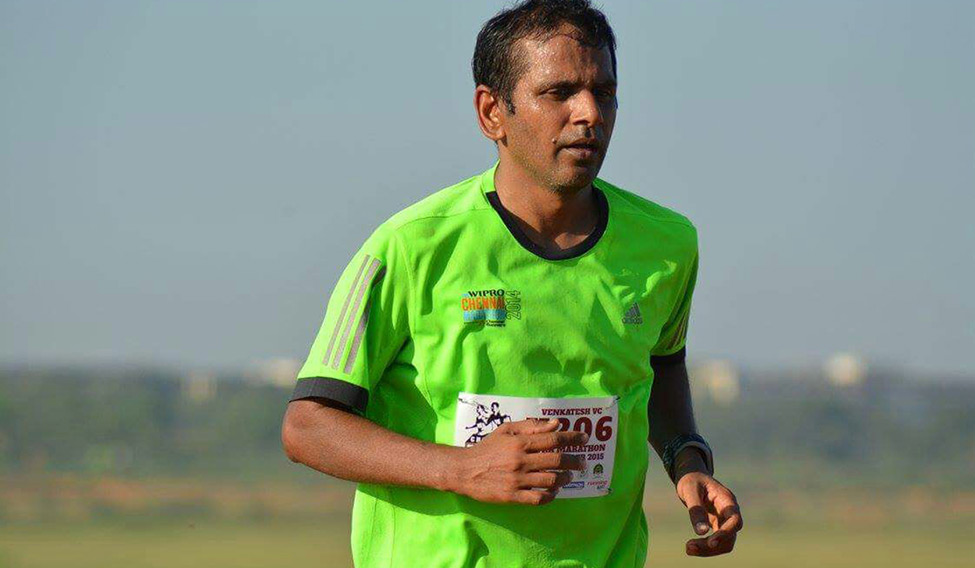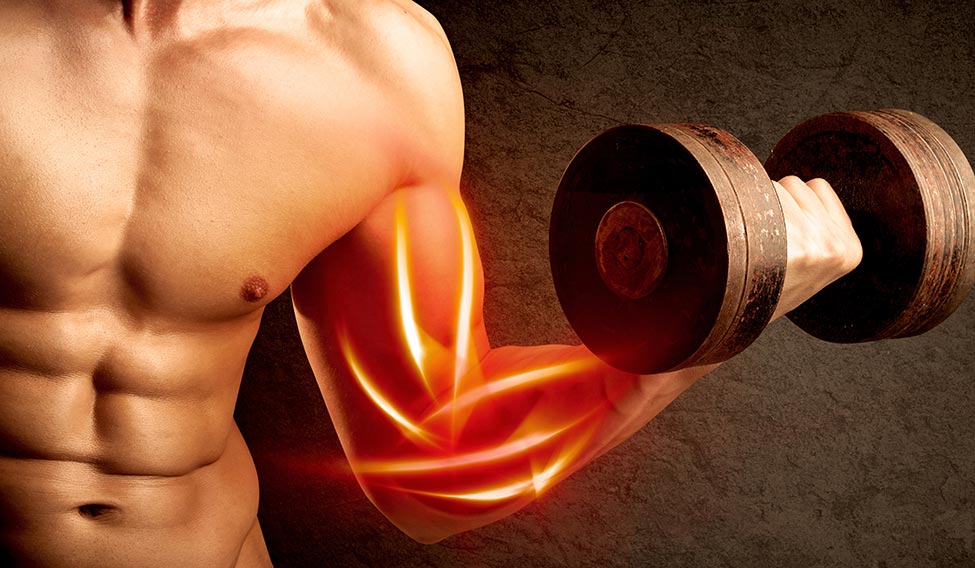When Gurpreet Singh opened his eyes and realised that he was on a hospital bed, he panicked. The last thing he remembered before passing out was doing a 10km run in the Thane Half Marathon. Singh, 41, collapsed after suffering a heart attack. Luckily, a group of doctors from Dr L.H. Hiranandani Hospital was running alongside him in the marathon. Singh was given cardiopulmonary resuscitation and rushed to the hospital where he underwent angioplasty.
Though he is stable now, Singh had a hard time coming to terms with what had happened. Singh, who is vice president in a multinational bank, was physically fit and didn't have any health problems except diabetes. He used to practise running every day. “I could comfortably do 10km in 75 minutes. But at the event, I set an unrealistic target,” he says. “I wanted to cover 10km in 68 minutes. I think I pushed myself too hard.”
A sudden change in the exercise pattern could cause heart problems, says Dr Rushikesh Patil, interventional cardiologist at Dr L.H. Hiranandani Hospital in Mumbai. “Exercise causes increase in heart rate, blood pressure and blood flow across the blood vessel wall, which can rupture the plaque and cause a heart attack. This is what happened in Singh's case,” says Patil. Often, people leading a sedentary lifestyle take part in marathons. They practise at the last moment, and do not go for regular health check-ups, even if they have diabetes or high blood pressure. “In an acute exercise situation, such people could be at a higher risk of cardiac events, including heart attack,” warns Patil.
India seems to have been bitten by the fitness bug. With an increase in awareness about the need to stay fit, more and more people are into running, swimming, cycling, hiking and power yoga. “However, a corresponding awareness about how much is too much and when to stop is absent,” says Dr Pravendra Nath Malik, senior consultant, arthroscopy and sports injury (orthopaedics) at Paras Hospital in Gurugram. As a result, hospitals are seeing an influx of fitness enthusiasts seeking treatment for sudden cardiac events and sports injuries like broken bones, damaged cartilages and torn ligaments. “Sports or workout injuries, as they are called, are among common reasons why people consult orthopaedic experts today. A large number of people suffer from musculoskeletal or orthopaedic injuries while striving for fitness at the gym,” says Malik.
 Buckling under Strain: Gurpreet Singh suffered a heart attack while running a marathon.
Buckling under Strain: Gurpreet Singh suffered a heart attack while running a marathon.
The mantra is to start slowly and scale up your workout step by step, and never cross the strength limit of your body and muscles. Before starting a strenuous exercise, it is important to first build your body’s strength.
Dhirendra Tak, a final-year medical student at Jhalawar Medical College in Rajasthan, wishes he knew it earlier. Tak had a ligament tear last year while trying weightlifting. “My left leg got twisted as the load suddenly came on it,” he says. He developed severe swelling and pain in the leg and a sensation of the knee giving out. He had to undergo an anterior cruciate ligament [ligament inside the knee] surgery. It took him six months to get back on track. “Since I missed a lot of classes, I had to work really hard. Somehow I managed to get through my exams,” says Tak. “I underwent physiotherapy for five months to regain strength.”
Despite all that he went through, Tak, 23, has crammed in a well-rounded fitness regimen into his busy schedule. He kickstarts his day at 6am with a one-hour workout in the gym. “The exercise varies daily as I have to rest the muscles,” he says. “I do push-ups and pull-ups and workout for chest, thigh muscles and upper arms.” On weekends, he plays football.
For a busy student or executive, setting aside an hour a day for exercise is a big challenge. To save time, most people tend to skip warm-up. Some people push themselves too hard in a bid to meet their fitness goals quickly. Lack of experienced trainers in tier II and III cities makes matters worse.
Knees and shoulders are the worst hit when it comes to workout injuries. “Workout injuries commonly cause damage to the cushion cartilage of the knee [meniscus tear] and the ligament inside the knee or to the fibrocartilage in the shoulder causing the shoulder to dislocate [labral tear] and the tendons inside the shoulder [rotator cuff tear],” says Dr Sujit Korday, consultant orthopaedic surgeon, arthroscopy and joint replacement specialist, Hinduja Healthcare Surgical in Mumbai.
“The most common mode of injury to the knee is because of twisting of the leg while running, as in a football injury. The shoulder is most commonly injured due to fall on an outstretched arm or because of repeated overhead activities like while playing a racket sport.” Then there is weightlifting that can sometimes cause disc herniation and joint pain.
 Vinaya Mallya of Bengaluru suffered a cartilage tear, which her doctors say could be because of excessive stretching while doing power yoga.
Vinaya Mallya of Bengaluru suffered a cartilage tear, which her doctors say could be because of excessive stretching while doing power yoga.
However, not all workout injuries require medical attention. A simple sprain may resolve itself in a few days with some ice application and rest. But heavy exercises can cause injuries that could lead to swelling and stiffness in the knee or shoulder. “In such a case, it is wise to seek immediate medical attention and get tests like X-ray or MRI scan done,” says Malik.
The fear of injuries has not dissuaded Pooja Bajaj, 28, from staying active. An internationally certified functional strength trainer and a blue belt in martial arts, Bajaj loves running and zumba. She suffered a ligament tear four years ago while doing zumba. “I had just joined zumba. My ankle twisted inside,” she says. Bajaj took a break from physical activities for a month, but went on to become a zumba instructor.
Yoga is less strenuous when compared to zumba. However, even that could cause muscular cramps and injuries. Vinaya Mallya, an IT consultant based in Bengaluru, started practising power yoga last year, but stopped after suffering a cartilage tear. The 43-year-old is now preparing herself mentally for surgery. “That seems to be the only solution or else it could trigger an early onset of arthritis,” she says.
Mallya is not sure about what she did wrong. “Doctors say this generally happens because of excessive stretching of the knee joints. Tennis and badminton players are prone to it,” she says. “Since I do not play any such sport, I asked the doctors if yoga could be the cause. They said it could be, if excessive stretching was done.” Now, even excessive walking leaves Mallya with a nagging pain. She has been asked to modify her lifestyle.
Couch potatoes should be mindful when starting out on a fitness regimen. Unfriend friends who regularly post pictures of their marathon adventures, showing off their bare, toned arms and flat belly! Never get into an exercise routine if you have not even ventured out for a brisk walk for months together. Even running, a simple exercise that does not involve machines or dumbbells, may not suit all body types. It could cause knee injuries in people who are obese or overweight, say experts.
An incline run on the treadmill could do more harm than good for those who have weak knees. “It could help you burn calories fast, but it might cause severe damage to the knee cartilage, if you have a knee problem,” says Dr Naveen Sharma, consultant, joint replacement and arthroscopy surgeon at Apollo Spectra Hospital in Jaipur.
If you don't do a sport with proper science and structure, you will end up messing things, warns V.C. Venkatesh, a marathoner from Mysuru. When you run, the impact on your knees could be equivalent to 3 to 4 times your body weight for every foot strike. “So, it is important for a runner to strengthen the muscles around the knee to avoid injuries,” he says.

Venkatesh, 49, has been running for the past 30 years. He was advised to quit running after he twisted his knee while climbing down the stairs. The runner in him, however, didn't want to stop. With determination, Venkatesh managed to regain his strength, but he is now more cautious. He has reduced his quantum of running in the past five years to improve effectiveness. He runs 3 to 4 marathons a year and he also takes part in half marathons. He makes it a point to do exercises to strengthen his legs and focuses on core strengthening. “Nutrition is very important as running can cause a lot of micro injuries,” he says. “So runners need to focus on pre- and post-run nutrition. There is a myth that runners should eat meat. I'm a vegan. Soya protein and veg protein supplements, green vegetables, nuts and pulses are my sources of nutrition.”
Of late, barefoot running has emerged as a trend among marathoners. Sports medicine specialists, however, are wary of people running barefoot on bad roads. Venkatesh prefers to run barefoot. It is the most natural form of running, he says. Moreover, he is able to do better when he runs barefoot. “Don't worry about the pebbles on the road when you run,” he says. You will be surprised at the quick reflexes when the foot hits a pebble. So they don't go deeper or hurt you much. Having said that, he quickly adds that Bengaluru roads are not conducive for barefoot running. Venkatesh wraps his toes and the arch of the feet with tape, as a precaution.
 If you don't do a sport with proper science and structure, you will end up messing things, warns V.C. Venkatesh (in pic), a marathoner from Mysuru.
If you don't do a sport with proper science and structure, you will end up messing things, warns V.C. Venkatesh (in pic), a marathoner from Mysuru.
“Running, like any other sport, has a lot of science to it,” says Venkatesh. “If you land on your heels, the impact will be more intense on your knees as the feet and the knees act as a locked system, so there is no cushioning of the impact. Whereas in forefoot landing, which happens when you run barefoot, the ankle acts like a shock absorber cushioning the impact.”
Gurugram-based banker Kunal Sharma, 30, learnt it the hard way. During his early days of exercising, he developed shin bone (tibia) pain. “It was because of running on a hard surface and not shifting my weight to the forefoot,” says Sharma.
Not one to give up, he learnt the correct running techniques, which made his fitness journey easier and more enjoyable. Currently, he does body weight training every alternate day. For some, workout injuries have been a turning point in their lives. For instance, Tak realised that physiotherapy is at the heart of orthopaedics while recuperating from surgery. The whole episode has kindled in him a great interest in orthopaedics. Says Tak, “I desperately want to be an orthopaedic surgeon now.”








